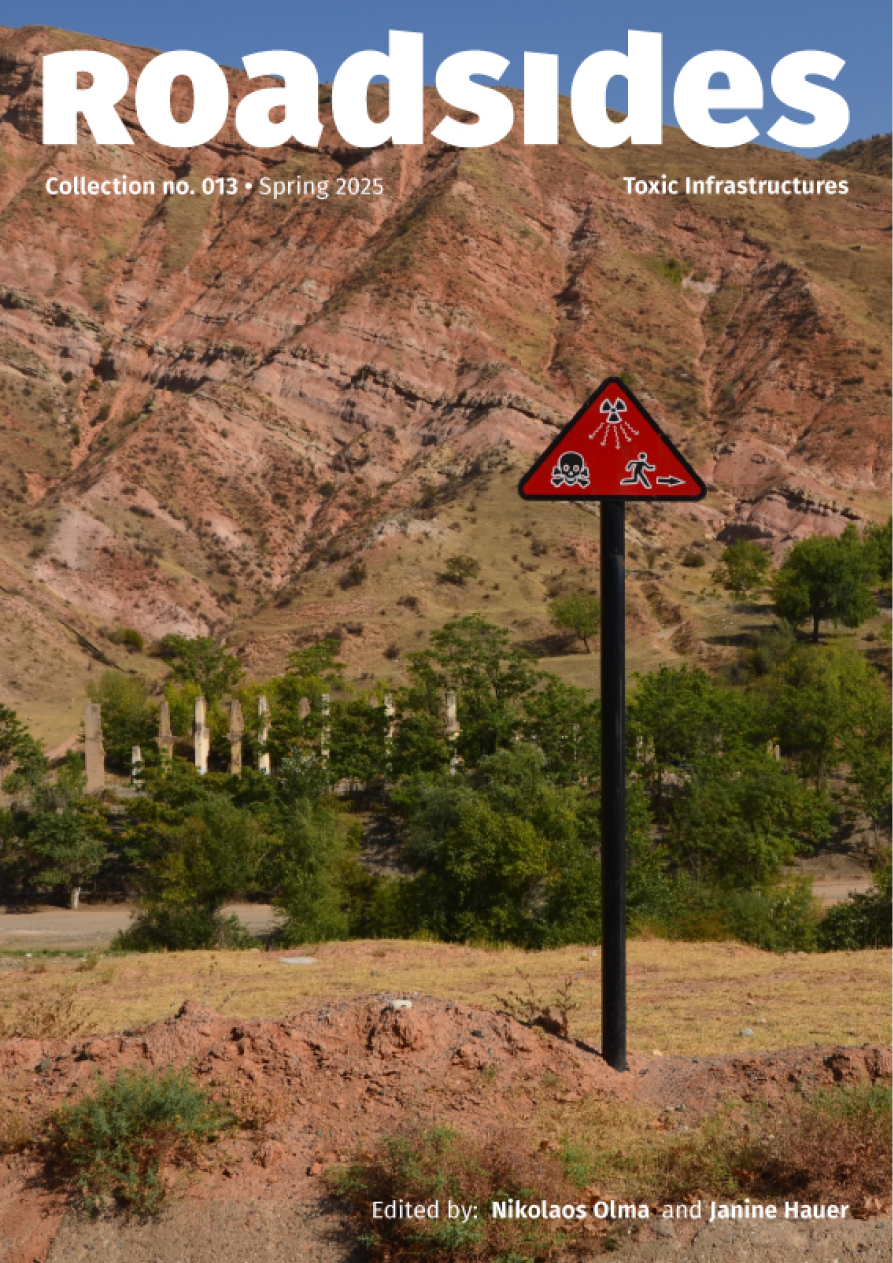
For decades, infrastructures have been widely seen as the backbone of modernity, a symbol of progress and development, and a manifestation of socio-technical imaginaries and futures. But in the current historical moment, these futures have become increasingly toxic. Not only are infrastructures involved in domesticating, enabling, and mediating toxic flows (Dewan and Sibilia 2023) as part of their regular operating cycles, but they also constitute contaminants themselves as they often consist of toxic materials and heavily treated substances. In this sense, while the purpose of infrastructures is to mitigate risk, they also paradoxically introduce new risks (Howe et al. 2016: 548) in ways that transform “the materials of modernity” into “instruments of slow violence” (Hecht 2018: 130).
This “infrastructural violence” (Rodgers and O’Neill 2012), a result of infrastructures’ turning against themselves and against their intended purposes, must be understood as “planned” (Boehmner and Davies 2018) and indeed inherent to “late industrialism” (Fortun 2012), rather than arising from accidental failure, as an emphasis across the literature on disasters would suggest. Neglect, deferred maintenance, neoliberal cost-saving measures, political (non-)decisions, and lack of accountability, among other factors, all reshape infrastructures in ways that make nuclear disasters, toxic spills, and water crises possible. Infrastructures mobilise elements, molecules, and substances, thereby co-producing toxicity and contamination that are in turn fixed incrementally through the adding of infrastructural layers.
Despite a significant body of work examining the socio-ecological damage produced by the workings of complex infrastructural systems, the concept of toxic infrastructures remains undertheorised. And yet, thanks to their centrality and ubiquity in everyday life around the globe, we believe that infrastructures provide a unique lens through which to capture the workings and effects of late industrialism over different scales and “toxic timescapes” (Müller and Ohman Nielsen 2023). This collection on toxic infrastructures thus aims to grasp the entangled, dynamic, yet quotidian relationship between toxicity and infrastructures and the highly complex and multiscalar daily workings that render infrastructures toxic.
This edited collection exposes new ontological and epistemological frameworks for situating and understanding the deleterious role of infrastructures in late industrialism. The articles below tackle the intimate relationship between toxicity and infrastructures, empirically grounding and considering the political, economic, and cultural relations that create and sustain toxic infrastructures across extended spaces and durations.